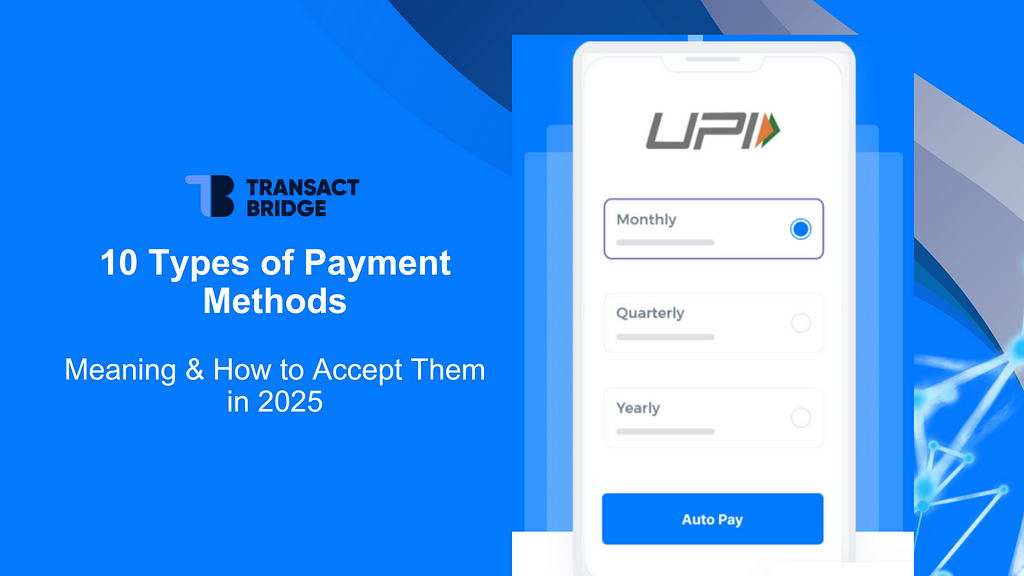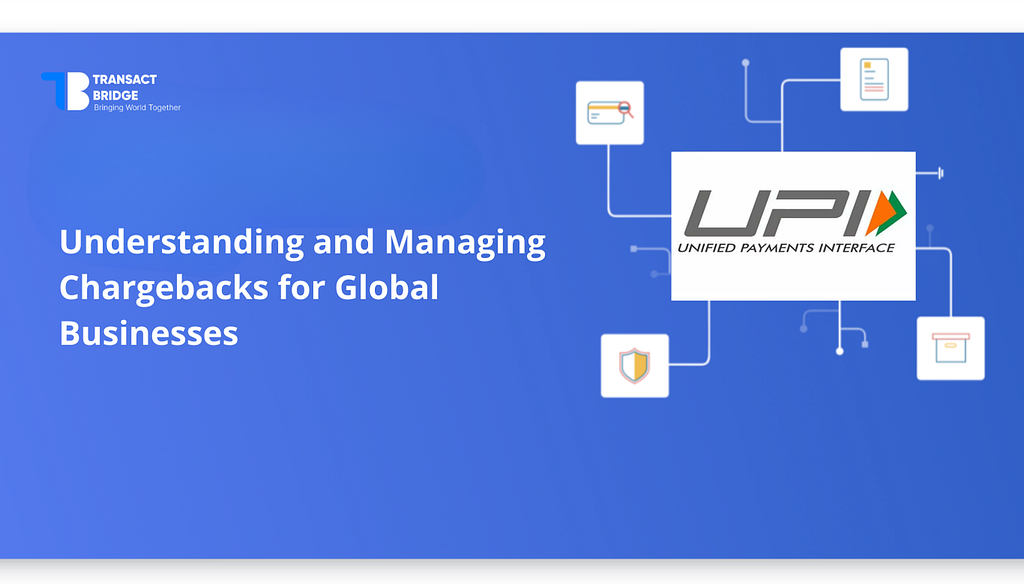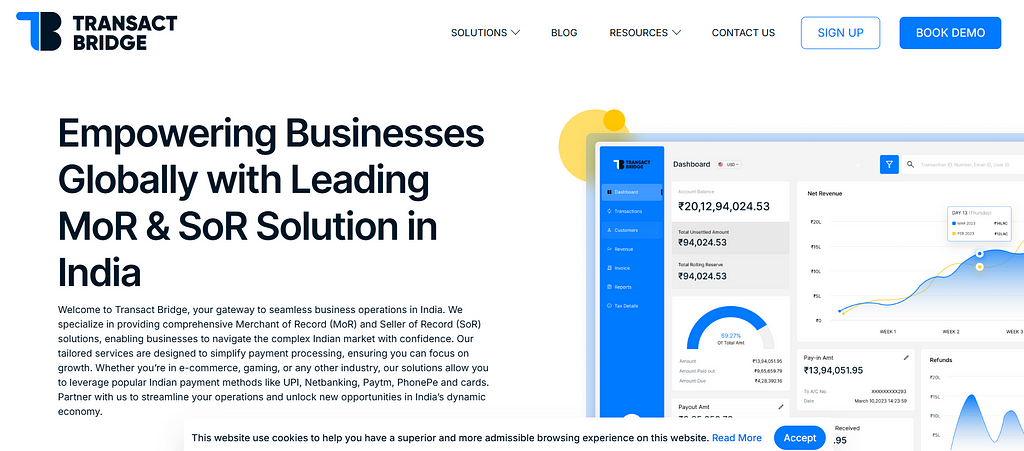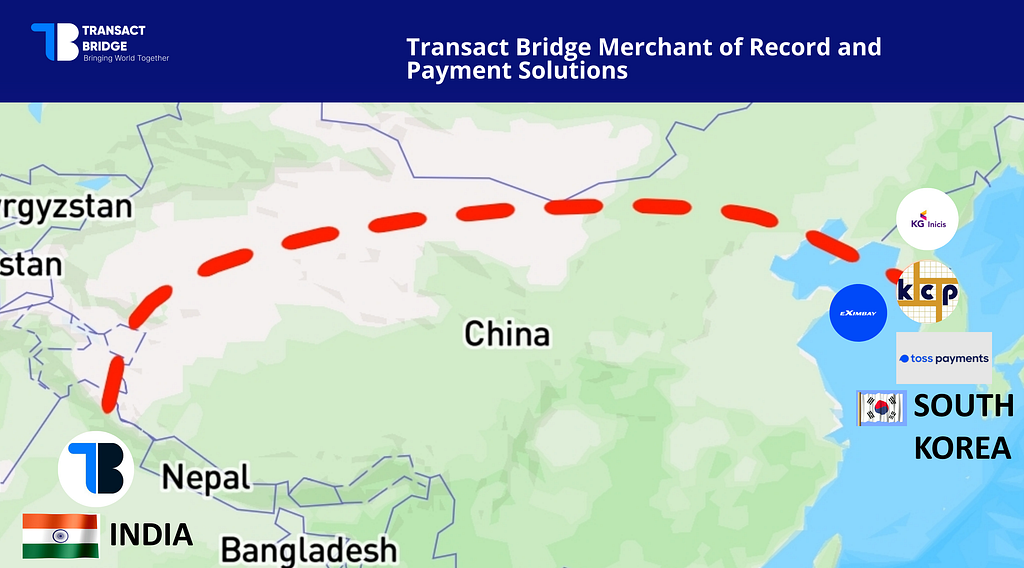
How UPI Payments Are Transforming Global Payment Systems
Published on: Thu 02-Jan-2025 01:06 PM

When it comes to digital payments, India’s Unified Payments Interface (UPI) has redefined convenience and accessibility. Since its inception in 2016, UPI has become the most preferred payment method in India, processing a staggering 10.5 billion transactions in September 2023 alone, with a transaction value exceeding ₹15 trillion (~$181 billion USD). What started as a local initiative has now captured global attention, with countries and businesses across the world taking note of its simplicity and scalability.
For international brands operating in India, adapting to UPI is no longer optional—it’s the gateway to unlocking higher payment success rates. Companies like Amazon, Netflix, and Spotify have already embraced UPI, witnessing dramatic shifts in their customer engagement metrics. Central to this transformation is Transact Bridge, a company that empowers global businesses to seamlessly integrate UPI into their payment systems.
UPI’s Global Adoption
UPI is breaking boundaries beyond India, cementing its place in the global payment ecosystem. The platform has already gained traction in countries like Singapore, UAE, and Bhutan, where cross-border transactions are now simpler than ever.
Singapore: In February 2023, UPI was linked with Singapore’s PayNow, enabling real-time, low-cost remittances between the two countries. Over $100 million USD worth of transactions flowed through this channel in just the first few months.
UAE: UPI payments are accepted across key retail and hospitality sectors in the UAE, a boon for the millions of Indian expatriates and tourists who frequent the region.
Bhutan: Bhutan became the first country to integrate UPI for domestic use, helping Indian tourists make payments without exchanging currency.
Story Highlight:
When MakeMyTrip, an Indian-origin travel booking platform, expanded into Singapore, it integrated UPI to capture Indian travelers booking international trips. The result? A 40% increase in successful transactions and greater trust among users.
UPI’s Dominance in India
India’s payments landscape is a textbook example of digital transformation, with UPI as its undisputed leader. Some compelling statistics:
In 2023, UPI accounted for 85% of India’s digital transactions, surpassing credit and debit cards combined.
Over 300 million unique users and 50 million merchants are active on the UPI network.
The average transaction size on UPI has grown to ₹1,500 ($18 USD), reflecting increased trust in high-value payments.
Comparison with Alternatives:
Credit Cards: India has just 75 million active credit cards compared to over 300 million UPI users.
Wallet Payments: Wallets like Paytm and PhonePe initially dominated but were eclipsed as UPI offered direct bank-to-bank transfers without the need to preload funds.
Story Highlight:
Global fast-food chain McDonald’s India faced significant challenges with payment failures during peak hours due to wallet and card limitations. After integrating UPI, payment failure rates dropped by 60%, while customer retention during busy meal hours improved significantly.
Challenges with Traditional Payment Methods for Global Companies in India
Despite India’s vibrant economy, payment-related challenges have long hindered international businesses. Common issues include:
Low Credit Card Penetration: Credit card ownership is limited to urban, affluent segments, leaving a vast untapped audience in smaller cities and rural areas.
Transaction Failures: Card-based payments often experience declines due to technical issues, insufficient funds, or security protocols.
Complex Wallet Ecosystem: Wallets require preloaded balances and often lack interoperability, reducing their appeal for seamless transactions.
These barriers make UPI an attractive solution, as it circumvents the inefficiencies of traditional payment systems.
Shifting to UPI for Higher Payment Success Rates
The shift to UPI is a game-changer for global companies operating in India. Its unique features—instant transfers, zero fees, and widespread adoption—offer unparalleled advantages.
Why UPI Works:
Massive User Base: UPI’s integration across platforms like Google Pay, PhonePe, and Paytm makes it accessible to nearly every Indian consumer.
Real-Time Transactions: Payments are completed within seconds, reducing customer frustration and cart abandonment.
Recurring Payments: UPI AutoPay allows businesses to set up subscription models effortlessly, a key feature for OTT platforms and SaaS providers.
Story Highlight:
Netflix India initially struggled with failed payments for its recurring subscription model. After implementing UPI AutoPay, it reported a 25% drop in churn rates, as subscribers no longer faced payment delays or failures. This move also attracted first-time users who preferred UPI over cards.
Data Insight:
According to the NPCI, UPI-based recurring payments saw a 250% increase in adoption among businesses in 2023, signaling its growing importance for subscription-driven industries.
Transact Bridge: Empowering Global Companies in India
For global companies navigating India’s complex payment landscape, Transact Bridge serves as a trusted partner. With its expertise in UPI integration, Transact Bridge simplifies the adoption process and ensures seamless transactions.
How Transact Bridge Helps:
One-Stop Integration: Its platform provides easy APIs and SDKs for UPI integration, eliminating the need for multiple payment gateways.
Compliance Assurance: Transact Bridge ensures adherence to India’s data localization laws and Reserve Bank of India (RBI) regulations.
Scalability: The platform is built to handle high transaction volumes, catering to the demands of growing businesses.
Insightful Analytics: Real-time dashboards help businesses track transaction success rates, user behavior, and payment trends.
Story Highlight:
When Adobe, a global software giant, sought to expand its customer base in India, it partnered with Transact Bridge to enable UPI payments. Within six months, Adobe saw a 20% increase in software subscriptions, largely driven by Indian users who preferred UPI over traditional payment methods.
Customer Testimonial:
A senior executive at Adobe shared, “Transact Bridge has been instrumental in helping us scale our India operations. UPI has unlocked a new demographic of users who were previously underserved by traditional payment methods.”
Conclusion
UPI’s rise is not just an Indian success story—it’s a blueprint for the future of digital payments globally. By offering unmatched convenience, real-time transactions, and scalability, UPI has transformed India’s payment ecosystem. For global businesses, especially those eyeing the Indian market, adopting UPI is a strategic imperative.
With companies like Transact Bridge leading the charge, integrating UPI has never been easier. By bridging the gap between global brands and India’s digital consumers, Transact Bridge empowers businesses to thrive in one of the world’s fastest-growing economies.
The future of payments is here, and it’s powered by UPI. For businesses, the time to embrace this change is now.












